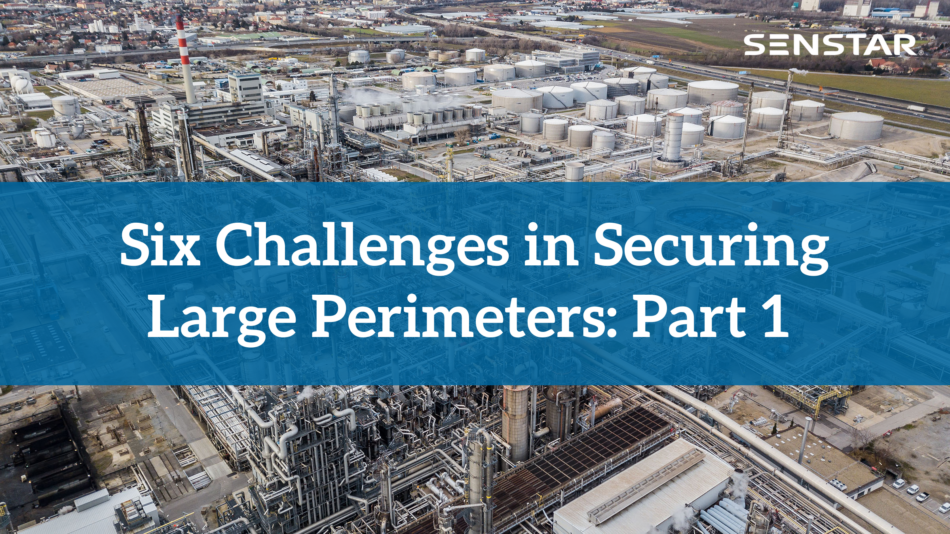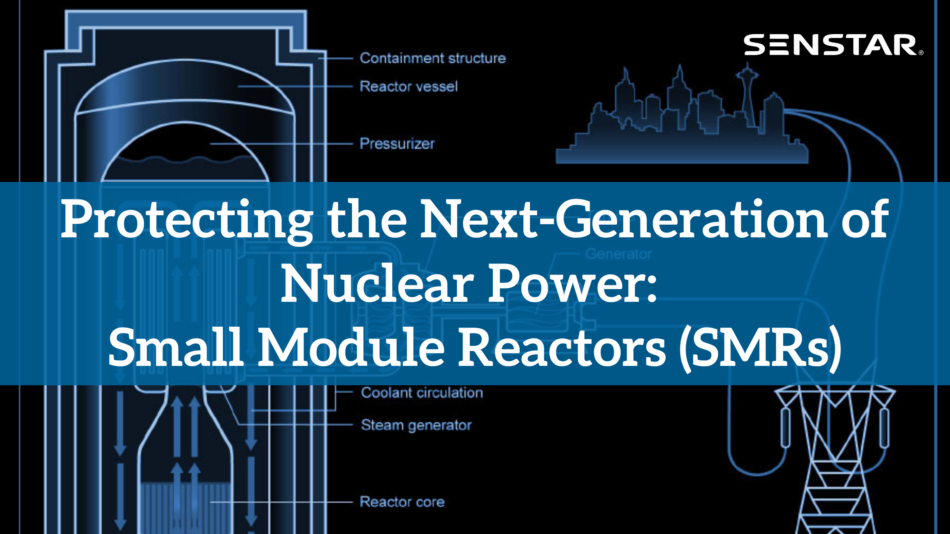Maintaining Sterile Zones in Correctional Facility Perimeters
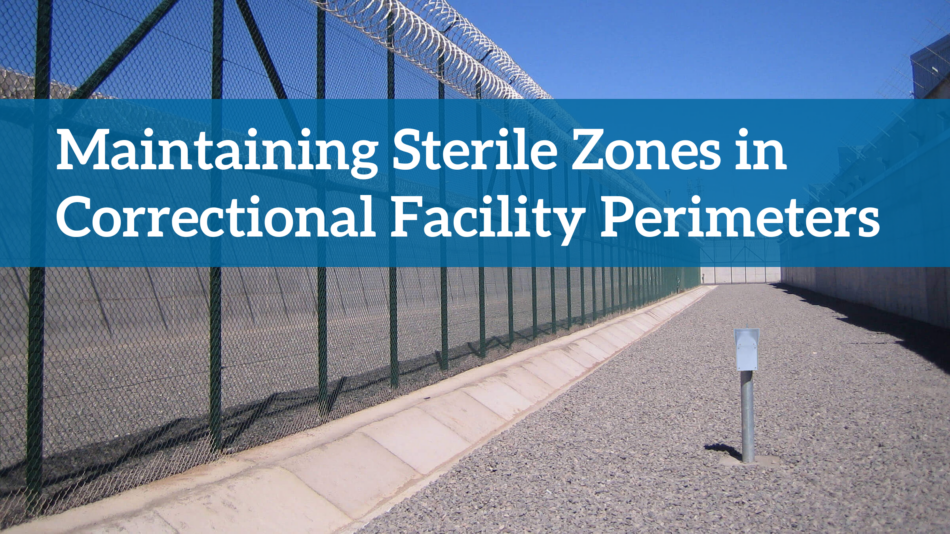
Maintaining a secure perimeter from both internal and external threats is a fundamental requirement for correctional facilities. The perimeter’s security infrastructure, as part of a comprehensive physical protection system (PPS), includes a variety of multi-layered systems, ranging from passive systems like fences and walls to active systems like perimeter intrusion detection sensors and video surveillance. The perimeter security infrastructure serves six primary functions: deter, detect, delay, deny, defend, and document physical intrusions. In this article, we look at best practices when implementing sterile perimeter zones.
What is a Sterile Zone?
Sterile zones, otherwise known as clear or buffer zones or, in specific cases, “no man” zones, are areas around the perimeter designed to assist in the detection of unauthorized persons. The space, both outside and inside the perimeter fence(s), must provide clear sight lines for correctional officers and surveillance cameras. The space should also be carefully maintained to ensure the optimal performance of intrusion detection sensors.
Depending on the facility, sterile zones along a correctional facility’s perimeter will include one or more of the following components:
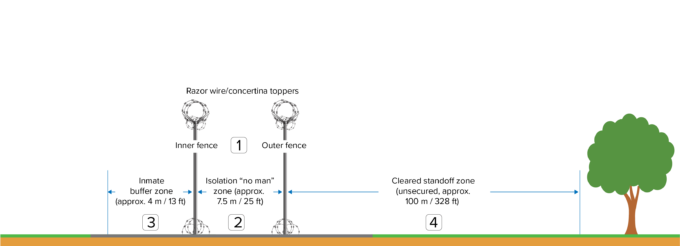
Sterile zones assist in the detection of intruders. Each part has a different function and has its own requirements.
1. High-Security Fences
High-security fences, typically installed in parallel and enhanced with razor or concertina wire, provide a strong deterrent by making escape attempts physically difficult and highly dangerous. That being said, escape attempts will still occur. To assist correctional officers, fence-mounted perimeter intrusion detection sensors are commonly deployed.

A double perimeter fence enhanced with razor wire coils. FlexZone is installed on both fences, providing immediate detection on both sides of the perimeter.
Senstar offers a variety of fence sensors that are used extensively at correctional facilities worldwide. They provide cost-effective, all-weather 24/7 perimeter security by detecting attempts to cut, climb, or lift the fence fabric. Fence sensors are ideal for dual-fence deployments, as early detection on one fence increases the time response forces have before the intruder can defeat the second fence.
Fast, precise, and reliable detection
Senstar’s FlexZone and FiberPatrol fence sensors immediately detect and locate intrusions to within a few meters or feet. They are designed to provide reliable detection on fences up to 4 m (14 ft) in height with a single run of cable. For added security, double-run configurations are also available, and can be configured to generate only a single alarm during an intrusion event
Works with fence toppers and razor wire
Razor, barbed tape, or concertina wire perform critical deter, delay, and deny functions in correctional facilities. Senstar fence sensors are deployable in armored configurations and can be deployed alongside or even on the coils themselves, making it virtually impossible to climb a fence undetected.
Low nuisance alarm rate
Minimizing false or nuisance alarms is critical to avoiding operator overload, distractions, and system mistrust. The seriousness of an escape attempt requires that control room operators avoid complacency. Senstar fence sensors are designed to detect real intrusions while filtering out fence vibrations caused by environmental factors.
In addition to anti-nuisance alarm mechanisms like environmental disaggregation, Senstar offers a system-level AI-based solution, the Senstar Sensor Fusion Engine, which can solve the problem of nuisance alarms once and for all in problematic areas.
Minimal maintenance
Senstar sensors are designed and tested for reliable long-term operation under extreme heat and cold. The fence sensors themselves can be configured remotely, reducing the number of equipment technician visits to the perimeter.
A side benefit of fence-mounted sensors is that they provide early warning of physical vulnerabilities caused by loose or damaged fence components. If a specific section of fence starts to generate frequent nuisance alarms, the alarm location data can be used by maintenance staff to precisely locate and fix the issue.
2. Isolation “No Man” Zone
The isolation or “no man” zone, the cleared area between the inner and outer fences, serves multiple critical functions. First, the presence of an unauthorized person within the isolation zone is an unambiguous security threat and is ideally trapped until correctional staff can arrive. Second, the area is an ideal environment for the deployment of volumetric sensors such as buried OmniTrax sensors or above-ground UltraWave microwaves. Virtually impossible to bypass, they provide immediate detection and serve as a second, high-priority line of defense.
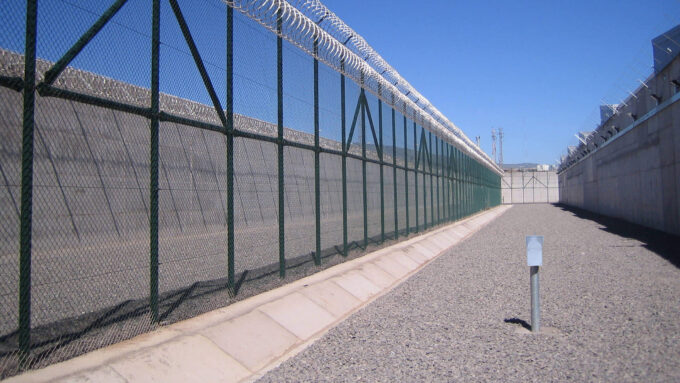
Isolation zones can be protected by volumetric sensors such as microwaves like UltraWave (shown above) or buried ported coaxial sensors like OmniTrax.
To maximize the effectiveness of these zones and the performance of the sensors, the following guidelines should be followed:
- Fences should be separated by enough distance to prevent over-the-top “bridging” attacks.
- Topsoil should be removed and replaced with crushed stone or gravel. The ground should be leveled and include drainage systems to avoid the pooling of water.
- The area must be kept clear of vegetation, debris, snow, and foreign objects.
3. Inmate Buffer Zone
In some jurisdictions, a buffer zone between outdoor inmate areas and the inner fence is required. This enables the safer deployment of ground-level razor wire and reduces the amount of inmate interactions with the fence. To maximize the benefits of interior buffer zones:
- The zone should be clearly marked with signage.
- Activity within the buffer zone may be monitored by video surveillance, with correctional staff being notified via events generated by people tracking video analytics.
Cleared Standoff Zone
A cleared, monitored standoff zone is used to ensure clear visibility of both external intruders and escapees. The vegetation should be maintained and free from obstructions that may block visibility from surveillance cameras. Risks associated with the standoff area include being used as a staging area for contraband delivery as well as external (unmonitored) communication with inmates.
To maintain security within the standoff zones:
- Close off the area from the general public, such as by a closed access road or perimeter demarcation signage
- Perform frequent guard tours and inspections of the perimeter fence
- Monitor and track activity via video surveillance. To reduce operator workload, people tracking video analytics or ground-based radar can be used to direct attention to individuals approaching the facility at a distance.
A Comprehensive Portfolio for Defense-in-Depth Solutions
Senstar has over 40 years of experience working with correctional institutions and offers products that are uniquely tailored for protecting sterile areas in correctional environments. Individually, our fence sensors, buried sensors, above ground sensors, and video analytic solutions provide best-in-class protection; used in combination, they form an integrated, multi-layered solution. 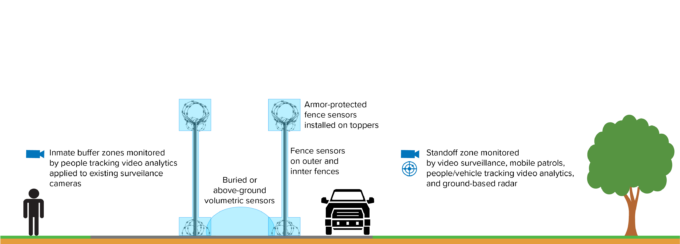
Multiple defense technologies and processes work in combination to secure the sterile zones protecting correctional facilities.
For More Information
For more information on how Senstar can help, contact your local Senstar representative.

